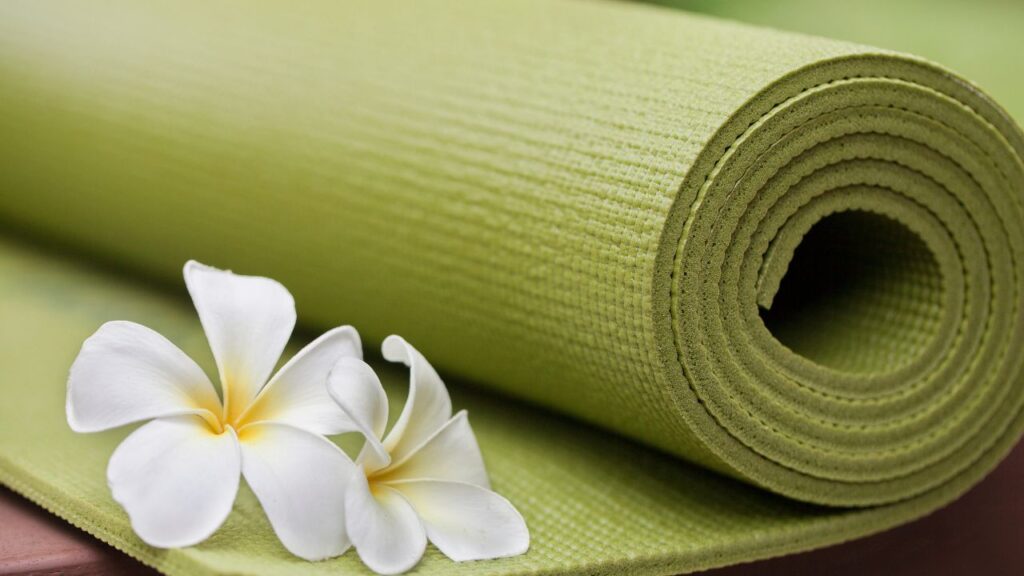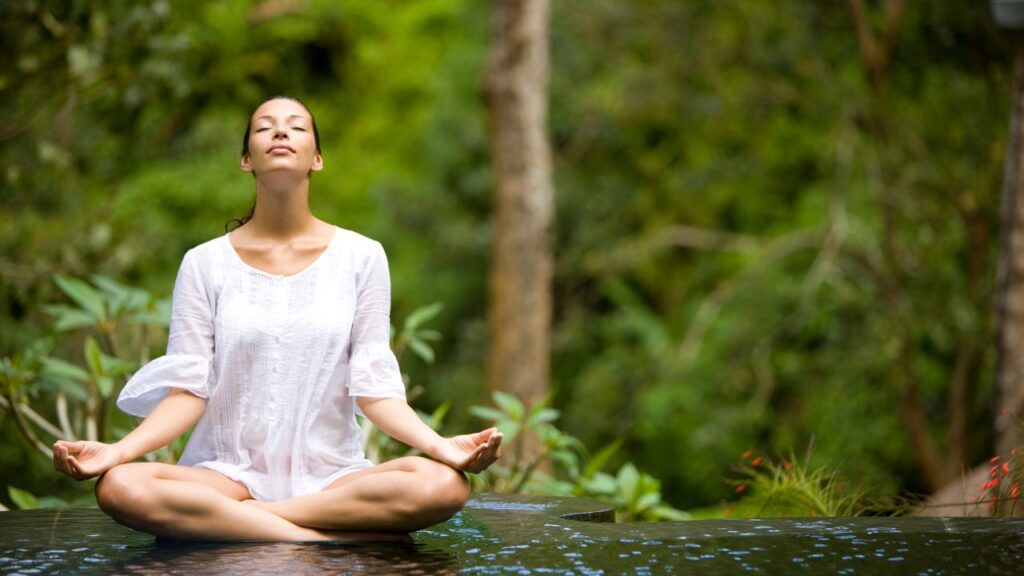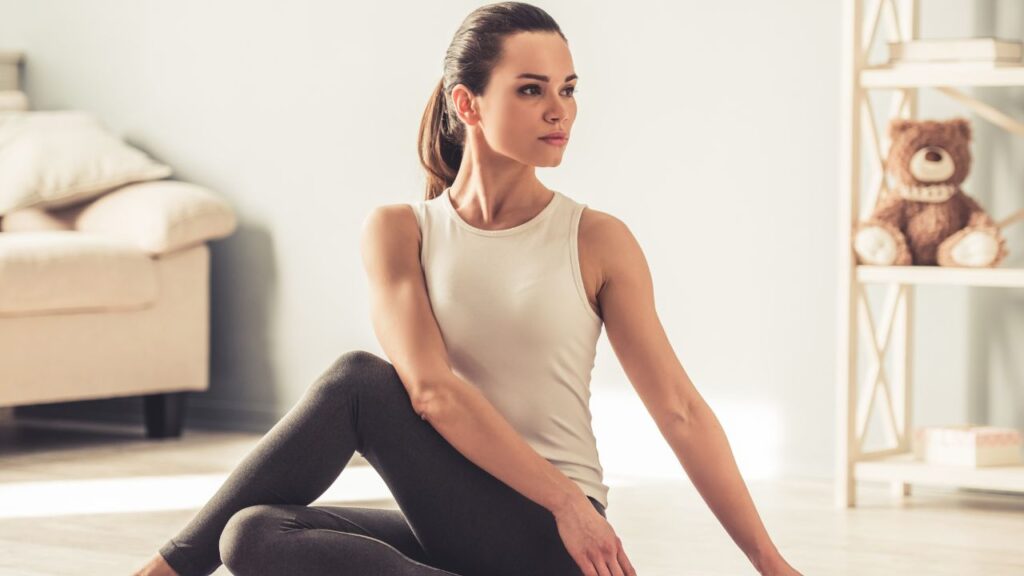Starting a yoga practice can feel like stepping into a new world, but it’s one of the most rewarding journeys you can embark on for your physical, mental, and spiritual well-being. This ancient practice offers countless benefits, including increased flexibility, reduced stress, improved posture, and a stronger connection to yourself. If you’re new to yoga, this guide will help you take your first steps with confidence and ease.
Why Practice Yoga?
Yoga is much more than just physical exercise. It’s a holistic practice that unites the body, mind, and spirit. Here are a few key benefits for beginners:
- Physical Health: Improves flexibility, strength, and balance.
- Mental Clarity: Reduces stress, enhances focus, and promotes relaxation.
- Spiritual Growth: Encourages mindfulness and self-awareness.
- Lifestyle Improvement: Combines physical activity with breathing and mindfulness, improving overall quality of life.

Step 1: Understand Yoga Basics
Before starting, it’s important to grasp the fundamentals of yoga:
- What is Yoga?: Yoga is a practice that includes physical poses (asanas), breathing exercises (pranayama), and meditation. Its goal is to promote harmony between body and mind.
- Styles of Yoga: There are various types of yoga, each catering to different needs:
- Hatha Yoga: Gentle and slow, great for beginners.
- Vinyasa Yoga: A dynamic flow of poses linked with breath.
- Restorative Yoga: Focuses on deep relaxation and recovery.
- Yin Yoga: Targets deep connective tissues through long-held poses.
- Power Yoga: A more intense workout-style yoga.
Step 2: Gather the Essentials
Starting yoga doesn’t require much equipment, but having the right tools can enhance your experience:
- Yoga Mat: Choose a non-slip mat that provides adequate cushioning.
- Comfortable Clothing: Wear stretchy, breathable clothes.
- Props: Blocks, straps, and bolsters can support your practice.
- Water Bottle: Stay hydrated, especially during more active sessions.
Step 3: Create a Dedicated Space
Carve out a calm, quiet space in your home where you can practice yoga without interruptions. Add elements that promote relaxation, such as soft lighting, calming music, or aromatherapy with essential oils.
Step 4: Start with Simple Poses
Ease into your practice with beginner-friendly poses. Here are five great asanas to get started:
- Child’s Pose (Balasana): A restful pose that stretches the lower back and hips.
- Cat-Cow Pose (Marjaryasana-Bitilasana): A gentle flow that warms up the spine.
- Downward Dog (Adho Mukha Svanasana): Strengthens the arms, shoulders, and back.
- Mountain Pose (Tadasana): Improves posture and grounding.
- Savasana (Corpse Pose): Concludes your practice with deep relaxation.
Step 5: Learn Breathing Techniques
Breathing is a cornerstone of yoga. Practice these basic techniques:
- Deep Belly Breathing: Inhale deeply through the nose, letting your belly expand. Exhale fully.
- Alternate Nostril Breathing (Nadi Shodhana): Balances the nervous system and calms the mind.
- Ocean Breath (Ujjayi): Creates a soothing sound that aids focus and relaxation.

Step 6: Start Small
Consistency is key when building a yoga habit. Begin with:
- Short Sessions: Start with 10-15 minutes a day. Gradually increase as you grow more comfortable.
- Simple Flows: Follow beginner routines, focusing on proper alignment.
Step 7: Practice Mindfulness
Yoga is not just about moving your body; it’s about connecting with your mind. Practice mindfulness by:
- Focusing on your breath.
- Observing your thoughts without judgment.
- Being present in each pose and moment.
Step 8: Seek Guidance
While self-practice is beneficial, learning from an experienced instructor can accelerate your progress:
- Join a Class: Many studios offer beginner classes tailored to your level.
- Use Online Resources: Platforms like YouTube or apps like Yoga with Adriene and Down Dog provide excellent tutorials.
- Work with a Teacher: One-on-one sessions can help you master techniques and avoid injury.
Step 9: Overcome Common Challenges
Starting yoga may come with obstacles. Here’s how to address them:
- Lack of Flexibility: Flexibility improves over time with consistent practice. Modify poses as needed.
- Time Constraints: Even a short practice can make a difference. Commit to what’s realistic for you.
- Self-Doubt: Remember, yoga is a personal journey. Focus on progress, not perfection.
Step 10: Develop a Routine
Integrate yoga into your daily life by:
- Scheduling it at the same time every day.
- Pairing it with other healthy habits, like meditation or journaling.
- Celebrating small milestones to stay motivated.

The Role of Diet and Lifestyle
Yoga complements a healthy lifestyle. Eating nourishing foods, staying hydrated, and prioritizing sleep will enhance your practice and energy levels.
Long-Term Benefits of Yoga
Regular practice leads to profound transformations:
- Physical Benefits: Improved posture, strength, and flexibility.
- Mental Benefits: Reduced anxiety and better focus.
- Emotional Benefits: Enhanced self-awareness and emotional resilience.
- Spiritual Benefits: A deeper connection to your higher self and the world around you.
Conclusion
Starting a yoga practice as a beginner is a journey of self-discovery and growth. With consistency, patience, and a willingness to learn, you’ll soon experience the transformative power of yoga in your body, mind, and spirit. Take the first step today and embrace a life of balance, strength, and inner peace. Namaste!



